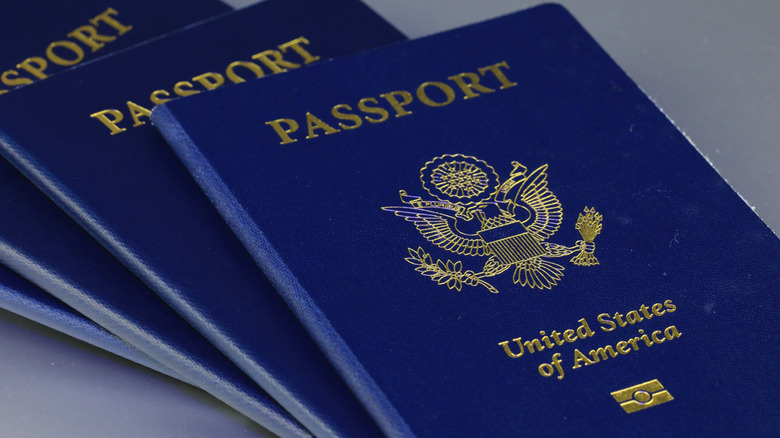What Do The Numbers At The Bottom Of Your Passport Mean?
Travel through any immigration border point, and your passport gets a workout. It is swiped, scanned, flipped open, and pored over by humans and machines to verify that you are who you say you are. But did you know that there are several zones on your passport? A Machine Readable Zone (MRZ), a Human Readable Zone (HRZ), and, in e-passports, an embedded biometric chip. Each element carries important information to confirm your identity and should be protected.
The MRZ contains that string of numbers, symbols, and letters at the bottom of your passport that may look like gibberish, but it's actually designed to be read by machines. More familiar, the HRZ is supposed to be scanned by the human eye to check clearly visible elements like the photo ID, passport number, name, age, and other identifying details, including your signature. Finally, e-passports contain chips with biometric information such as a digital image and fingerprints.
Machine-readable passports are standardized across the world — no matter where you go, immigration can scan and read your passport. In general, it's best not to share images of your travel documents. When you do, know that the MRZ holds as much information as the HRZ and must be safeguarded equally. That means making sure all your documents are stored properly — this includes your old passports, which are a security risk.
MRZ passport information designed to be scanned in seconds
So, all those numbers at the bottom of your passport are part of the MRZ. These details might seem insignificant to the naked eye, but to a passport scanner, they tell a different story. "This little strip of coded text contains all the essential details about you, like your name, passport number, and birthdate," explains developer Doug Sillars on the Mindee document processing website, "but it's designed for machines to read in seconds."
The first line of the MRZ details the document type, P for passport, then the issuing country code, USA for Americans, and your name. The second line has your passport number, nationality, date of birth, sex, and expiration date. There are also other numbers called check digits, which machines use to detect errors. Newer e-passports also have an embedded chip with the same personal information to pass through automated checkpoints. These chips can contain biometric information such as fingerprints or data for facial recognition software, as well. For example, in the United States, the chip stores a digital photograph of the passport holder that is checked against a scan of your face.
If you're applying for a new passport, you'll need to submit a photograph that complies with these digital biometric requirements. Remember: the best time to renew your passport is nine months before expiration. You don't want your travel plans canceled by an expired passport! Fortunately, it's easy to check on the status of your passport online. When you renew, you'll also get your old one back. So, be sure to store it — and all the information your passport contains — safely.

